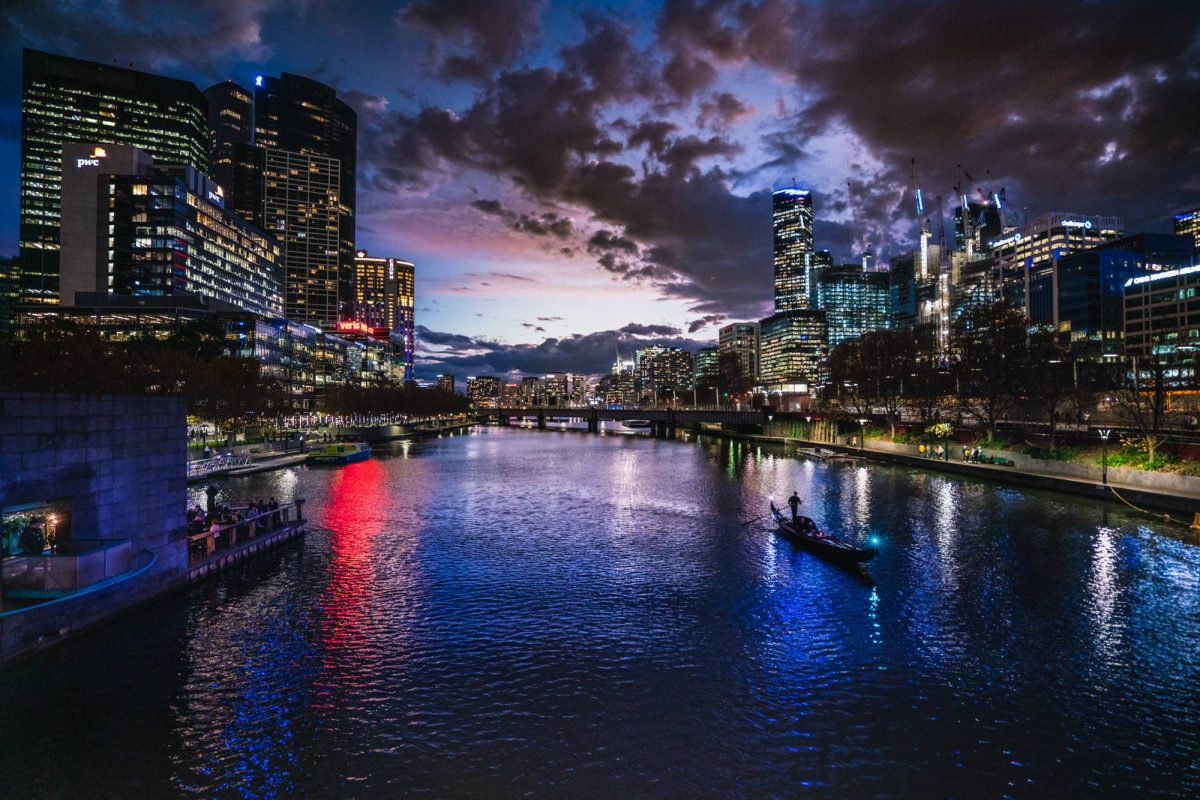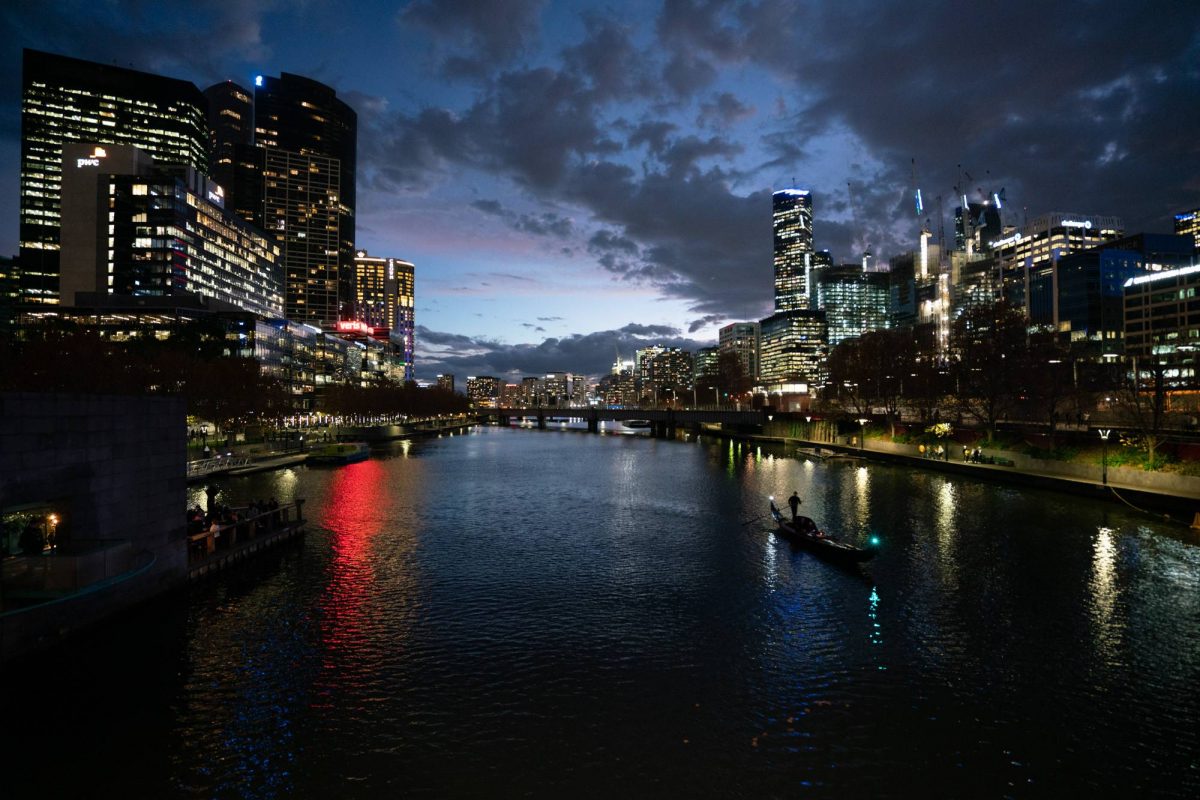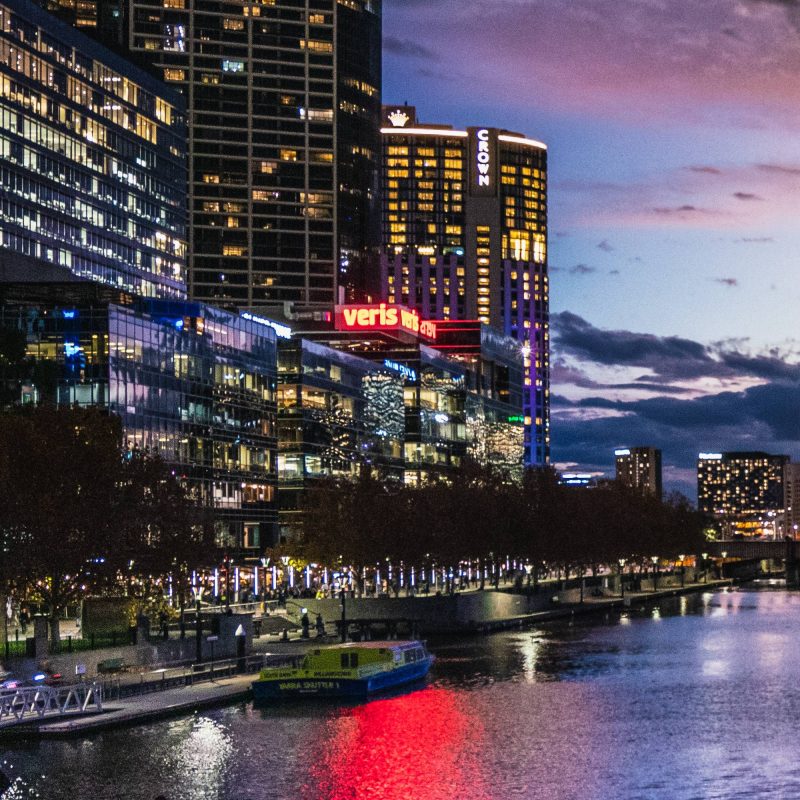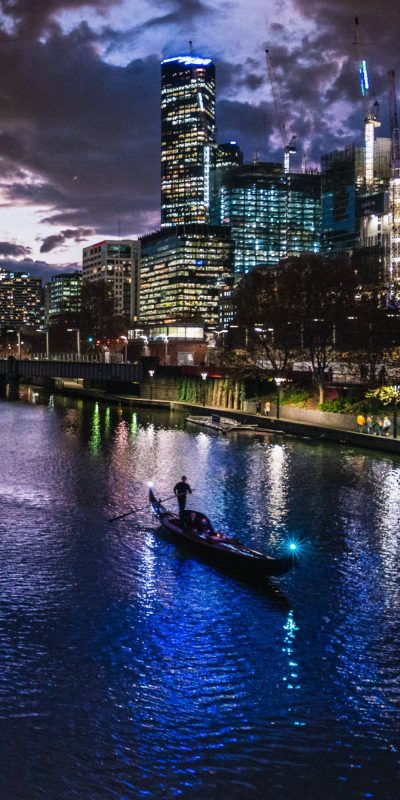Melbourne from the Evan Walker Bridge
This isn't a 'normal' photo for me. High ISO and hand-held in low-light aren't really my thing. But sometimes, it's a noisy-shot or no shot. What does that mean? To get a shot, you need light. You've three components of collecting light in a photo.

Each component has individual settings, and each setting has trade-offs depending which way you go. Knowing what creative outcome you are looking for, there’s a time and a place for going both-ways on these settings. High to low, fast to slow.
I’m a big fan of long-exposures, but sometimes they just aren’t possible with the outcome I’m looking for. In this example – a 10 second photo wasn’t possible. 1) The boat would be a ghosted blur – not what I want. 2) The bridge was rocking around – the entire environment would be a blurred mess. So, in this, I bumped the ISO up high (3200) meaning I could snap a hand-held shot that’s sharp and ‘still’.
- Shutter speed
- The time the iris of the lens is open for
- The longer the shutter speed, the more light comes in
- A fast shutter speed – 1/1000th for example – will ensure most movement is sharp, but requires lots of light
- A slow shutter speed – 1/10th for example – will ensure much more light comes in, but requires elements within the shot to be still
- Aperture f-Stop
- The size of the iris (or pupil), measured in a f-number
- The bigger the iris (and the smaller the f-stop number), the more light comes in
- A large f2.8, for example, allows more light than f8
- A large f-stop (smaller number) will have a shallow depth of field (as in blurred background, foreground and sharp middle-ground)
- A small f-stop (bigger number) will have a deeper depth of field (as in, more of the foreground to background can be sharp)
- ISO
- The sensitivity of the sensor
- The higher the number (e.g. ISO 1600), the more light is accepted by means of higher sensitivity
- The lower the number (i.e. ISO 100), the less light is accepted
- The lower the ISO, the less noise is collected. Noise is the grain that get’s picked up, and it’s generally seen as a negative-factor. Often, but not always.
Looking for Melbourne photography to print?
You can download photos of Melbourne, and plenty more, at https://photos.melbourne. It's a new little project I've started where pictures are free for personal use in HD quality, of $5 and $10 for medium and high resolution downloads. There's a growing collection...
And in conclusion - a photo before the edit
That's a little more of the technical side of a shot. And just to wrap it up, here's the image as-shot, along with a couple of close ups for detail. Not a massive amount of edits, but a bit of 'punching up'.



Leave a Reply